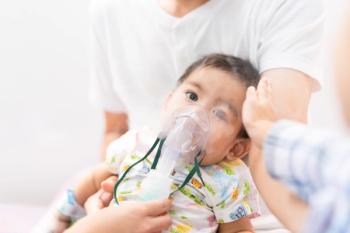
- Vol 38 No 3
- Volume 38
- Issue 03
Can you really diagnose RSV based on how the cough sounds?
A study examines whether a clinician can diagnose respiratory syncytial virus (RSV) from how a child's cough sounds.
Senior staff and nurses, but not residents, can diagnose respiratory syncytial virus (RSV) infection based on cough sound as accurately as bedside tests. However, they can’t outperform the gold-standard diagnostic test—multiplex ligation-dependent probe amplification (MLPA)—according to the results of 1 Netherlands study.1
During a 3-month period, parents of children aged younger than 1 year who were admitted to the pediatric ward because of airway complaints recorded their child’s cough sounds with their smartphone. Investigators then linked these audio fragments to the viral agents found via MLPA analysis. They inserted 16 cough fragments representing 4 different viral pathogens (RSV, influenza, human metapneumovirus, and rhinovirus) into a questionnaire presented to 32 pediatric nurses, 16 residents, and 16 senior staff members. Respondents were asked to classify each cough (as wet, dry, or other), specify features of the so-called typical RSV cough, and indicate whether the cough was or was not caused by RSV.
Participants showed no consistency in describing the coughs, making it impossible to specify features of a so-called typical RSV cough. Influenza was most easily distinguished from RSV, whereas RSV itself most often was identified as RSV. On average, senior staff correctly identified 3.8 of 5 of the RSV coughs, with 37.5% identifying all coughs correctly, demonstrating a mean sensitivity of 76.2%. Nurses did nearly as well, correctly identifying 3.7 of the 5 RSV coughs, with 34.4% achieving 100% accuracy, corresponding to a mean sensitivity of 73.1%. Residents, whose average work experience was 2.1 years, fared worse than senior staff and nurses in identifying the coughs (mean sensitivity, 51.3%), and investigators determined that they needed at least 3.5 years of working experience to reach the same level of detection as their more experienced colleagues. Compared with bedside tests, senior staff and nurses performed as well at detecting patients with RSV based on cough sound, but could not validly distinguish RSV from other pathogens. Investigators therefore concluded that diagnosis based on cough sounds could not replace MLPA analysis.
Thoughts from Dr. Farber
I got a different takeaway from this. Although it is rarely necessary to diagnose RSV infections specifically in outpatients, this study shows that experienced pediatricians can do this quite well without any testing, and without even auscultating the lungs for wheezing. If you also look at the child to see how ill he or she appears, which should enhance accuracy, these findings suggest that televisits for diagnosing bronchiolitis in infants are not far-fetched.
Reference
- Binnekamp M, van Stralen KJ, den Boer L, van Houten MA. Typical RSV cough: myth or reality? A diagnostic accuracy study. Eur J Pediatr. 2021;180(1):57-62. doi:10.1007/s00431-020-03709-1
Articles in this issue
over 4 years ago
The latest Rx for sickle cell and oncologyover 4 years ago
The road to normalover 4 years ago
Seasonal allergies: What every pediatrician needs to knowover 4 years ago
Adolescent in detention center presents with hallucinationsalmost 5 years ago
Disseminated erythema migrans as a result of Lyme diseasealmost 5 years ago
Picky eating: When is the time to act?almost 5 years ago
Lung ultrasound: A useful tool for investigating bronchiolitisalmost 5 years ago
Making a diagnosis when labs and clinical findings don’t correlateNewsletter
Access practical, evidence-based guidance to support better care for our youngest patients. Join our email list for the latest clinical updates.










